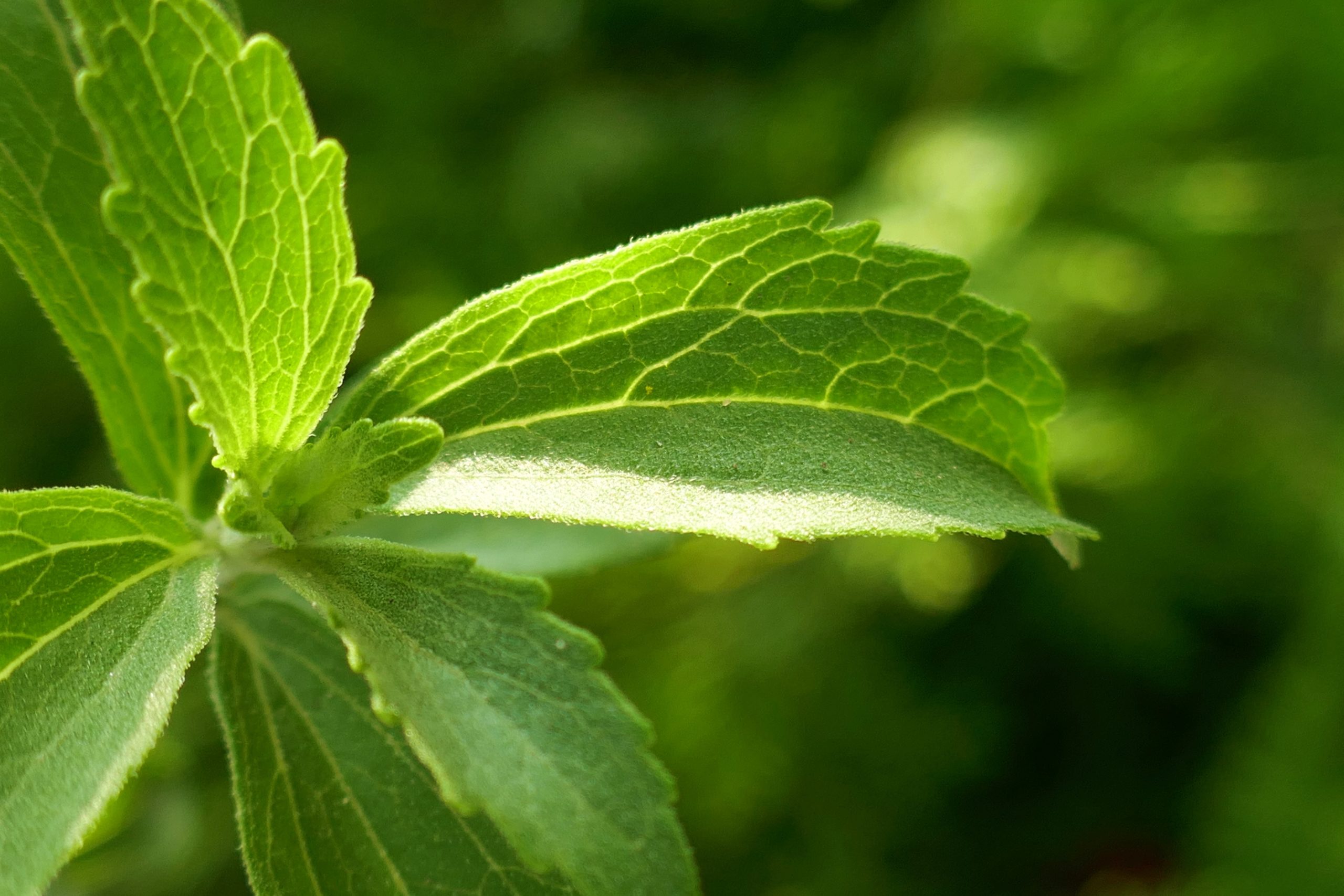- What is stevia and where does it come from?
- What’s the difference between stevia and steviol glycosides?
- How is stevia made?
- How sweet is stevia?
- What foods contain stevia?
- How can I know if stevia is in my food?
- Are there any known allergies to stevia sweeteners?
What is stevia and where does it come from?
Stevia is a common name for the zero-calorie sweetener that is derived from the stevia plant. Stevia is a plant of the Chrysanthemum family, and its leaves have been used as a sweetener in South America for hundreds of years. Extracts from the stevia leaf have been available as dietary supplements in the U.S. since the mid-1990s, and stevia sweeteners have been permitted for use in foods since 2008. Like all low- and no-calorie sweeteners, stevia may be used to replace sugar and reduce calories in foods and beverages while maintaining sweetness in products that consumers expect.
What’s the difference between stevia and steviol glycosides?
The shortest and simplest explanation is that steviol glycosides are the sweet components of the stevia plant’s leaves.
While the word “stevia” refers to the entire plant, only some compounds of the stevia leaf are sweet. These sweet components are called steviol glycosides, and each steviol glycoside has a particular taste profile and sweetness intensity.
Rebaudioside A (abbreviated Reb A) and stevioside are the most abundant steviol glycosides in the plant and usually comprise the majority of the steviol glycosides in the sweetener preparations, either combined or individually. Other steviol glycosides include Reb B and Reb M. The specific steviol glycoside composition depends upon the composition of the harvested leaves, which, in turn, are influenced by soil, climate, and the manufacturing process.
How is stevia made?
To make stevia-based sweeteners, the key components are steviol glycosides – the sweet part of stevia leaves. Currently, there are four methods to produce steviol glycosides: extraction, bio-conversion, glucosylation and fermentation.
Extraction
This was the original production method for stevia-based sweeteners. During this process, stevia leaves are crushed and steeped in hot water. The mixture is filtered to separate the liquid plant extract from the leaves. The extract is purified again and produces a sweetener that contains various steviol glycosides.
Bioconversion
This process begins with steviol glycosides that have already been extracted from the stevia leaf. Bioconversion replicates the stevia plant’s natural maturation process, using enzymes to convert various, different steviol glycosides into specific, targeted steviol glycosides such as Rebaudioside M (abbreviated Reb M) and Reb D. Although the enzymes used in this production method are derived from genetically modified micro-organisms, the subsequent purification process(es) remove all enzymes and/or micro-organisms from the final product.
Glucosylation
As a foundation, glucosylation also uses steviol glycosides that have been extracted from stevia leaves. In this production method, enzymes are used to add glucose units, which produces a combination of steviol glycosides. All enzymes and/or micro-organisms are removed from the final product to deliver purified stevia extract.
Fermentation
Fermantation also replicates the stevia plant’s natural genetic process to create steviol glycosides. In the fermentation production method, steviol glycosides are produced by genetically modified micro-organisms that convert sugars into steviol glycosides like Reb M and Reb D. As with the other processes that may involve enzymes and micro-organisms, the extract is refined to remove those components and produce high-quality stevia extract.
How sweet is stevia?
Stevia is approximately 200-300 times sweeter than sugar, so only a tiny amount is needed to give a sweet taste.
What foods contain stevia?
Stevia sweeteners may be found in a variety of foods and beverages around the world, including reduced-calorie beverages, bread, tea, and yogurt. Stevia is also available as a tabletop sweetener.
How can I know if stevia is in my food?
Like all ingredients added to food, stevia sweeteners are included on the ingredient list of all food and beverage products that contain it.
Are there any known allergies to stevia sweeteners?
There are no known allergies to stevia sweeteners.


